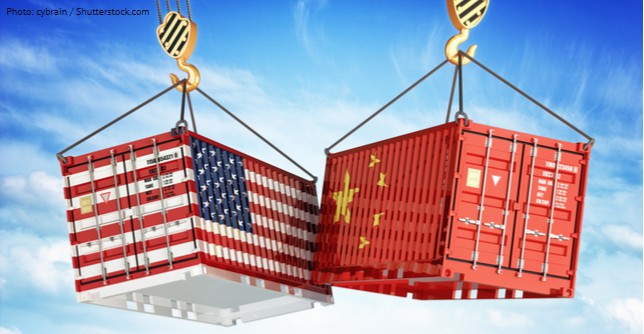
The often-maligned former president
George W. Bush was known for statements of simplicity. But love him or hate
him, Bush was profoundly correct when in Stockton, California in 2002 he told
the crowd of farmers and ranchers he was speaking to, “I’m thrilled to be here
in the breadbasket of America, because it gives me a chance to remind our
fellow citizens that we have an advantage here in America. We can feed
ourselves.” He was derided mercilessly by the media for that statement, but
some countries don’t see the joke. One of those countries is China.
Despite the importance of U.S. food
production on a worldwide scale, the agrarian-based economy of America’s past
is history. Several economic revolutions later, agriculture accounts for a mere
1% of U.S. gross domestic product. However, as a bargaining chip on the world
stage, U.S. agriculture far outweighs its low percentage of domestic economic
activity.
Throughout the ongoing trade dispute
with China, pundits have criticized American negotiators for concentrating on
low value products. But to governments that cannot feed their populations, the
value of U.S. agricultural production is much higher. Well over half of U.S.
agriculture is exported to other nations around the world, and the largest
recipient of our foodstuffs is China. A country of almost 1.4 billion people, China
cannot feed itself.
China is currently experiencing a
pork shortage as African Swine Fever ravishes its pig population, doubling the
price of “the other white meat.” Pork is the most frequently consumed meat in
China, and a staple in millions of Chinese homes. This unfortunate
epidemic is the perfect opportunity for American farmers and agricultural
haulers in heavy hog production states like Illinois, Iowa, Minnesota and North
Carolina to retake their market share, which has previously accounted for 14%
of pork in Chinese supermarkets.
And it is not only pork that
American agricultural producers and carriers can expect to profit from this
year. China is expected to import almost 3.4 million tons of rice – some of it
from the U.S., which is a huge opportunity for American farmers and
transporters. And of course another highly popular food in China is soybeans,
which are used in everything from processed foods to tofu to swine feed. Though
the recent trade war and swine flu has impacted soybean imports from U.S.
growers, China still imported 6.51 million tons in July 2019 according to the U.S.
Department of Agriculture.
But the importance of American agriculture
is not just about the tonnage of soybeans sent to China. For instance, the
United States ships large amounts of corn to Mexico, a country with which the U.S.
has a totally different type of relationship than it does with China. The U.S.
has used corn as a major negotiation tool with Mexico and has used a comparable
strategy around the world in every type of negotiation, from embargoes of rogue
regimes to humanitarian aid to Africa.
So while some are worried about the
lack of product to haul out of West Coast ports if the trade war does ramp up,
it is important to remember that there will always be activity in hauling the nation’s
agricultural production. After all, while popular sentiment may portray China
as a looming economic giant that threatens to dethrone the U.S., it’s good to remember
which nation can feed itself and which cannot.

